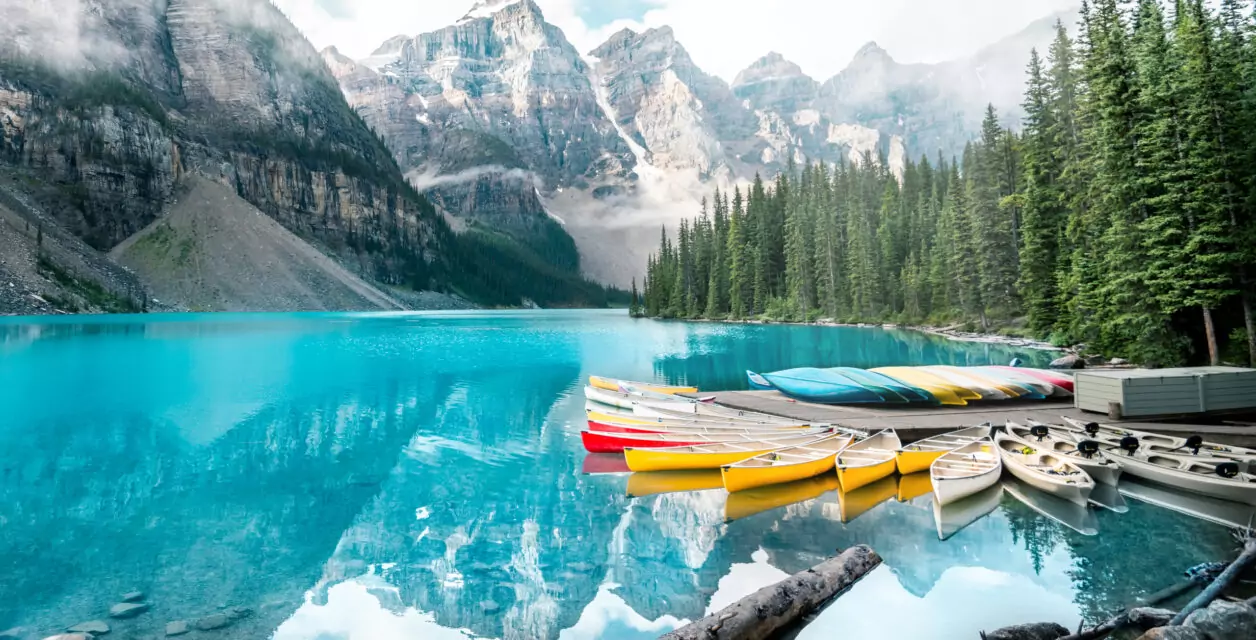As we have just approached the beginning of the winter season, you might find yourself curious about if there are any watersports you could still do when the temperature outside is below 30 degrees Fahrenheit (0 degrees Celsius)? Since you are reading this now, you probably would have guessed that right as, yes, there are some splashing activities unique to the cold season you still can and should consider doing during the cold days! Most of them do not require either fully or mostly human interaction, which makes them great during the pandemic.
1) Ice Diving
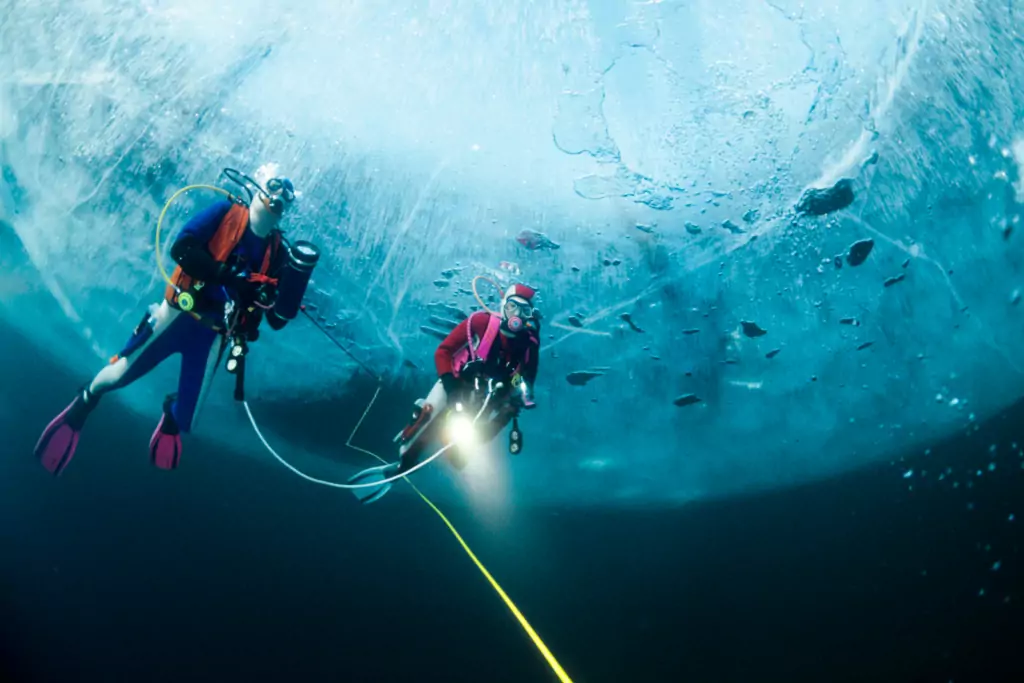
Any die-hard scuba diving fan will tell you that it is even more fun to do when making that hole in the ice used as a starting point for diving in, and here is why:
- Better visibility – the development of algae gets slower when it is freezing, and the severe northern winds will keep the water crystal clear. The underwater life reaches its highest levels!
- An opportunity to learn how to use drysuit – winter season gives you a chance to try a dry suit on, which is ideal for cold water. It is much easier to put it on than a wetsuit, even when wet; they are warm, and, most importantly, they can improve your diving skills, as it maintains the perfect body shape!
- Health benefits – enhanced immune system, strengthened blood circulation, and boosted resistance to illnesses are just some of them, but here are even more:
- Mood improvement
- Increased number of burned calories
- Reduced muscle inflammation
Although ice diving may seem like a lot of fun considering the aforementioned aspects, however, there are also several things to bear in mind, which can also be recognized as cons:
- Remember about that hole you made from which you entered? That will most likely also serve as your exit point, so make sure you do not get lost exploring the beauties of the underwater world!
- To enroll in an ice diving course, you should already have an Advanced Open Water license, which requires some time and effort to complete
The top destinations for the 2020-2021 winter season are considered to be the following:
- The North Pole and Summit Lake, Alaska, and Lake George, New York
- Great Lakes in Canada
- Greenland and Iceland in Europe
- The White Sea and Lake Baikal in Russia
- Antarctica
2) Snow Kayaking
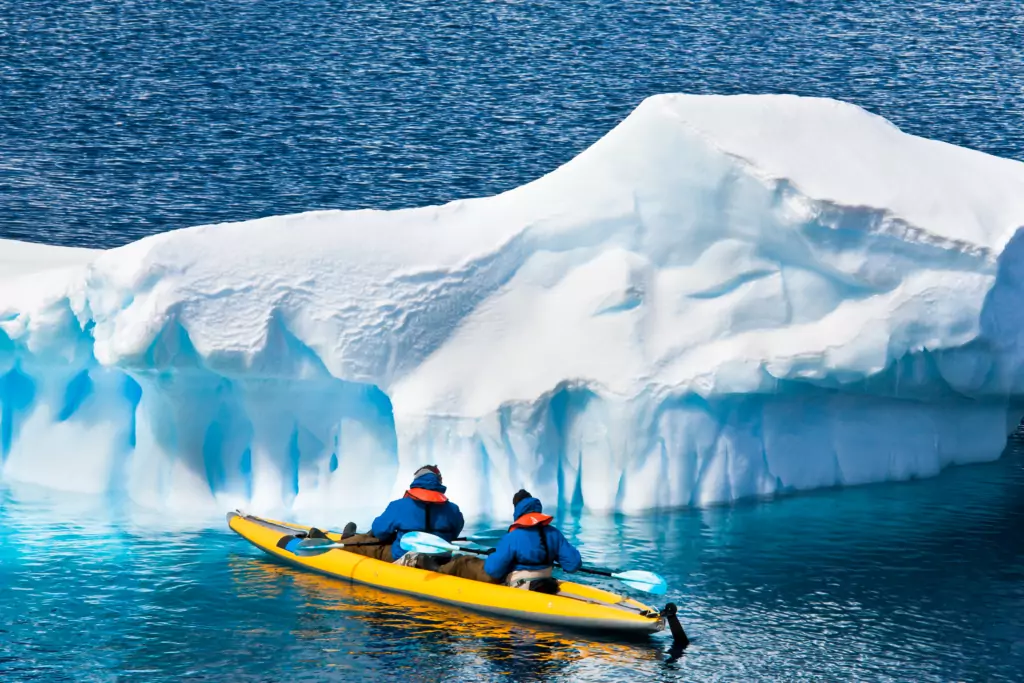
Kayaking is another watersports activity you can well enjoy throughout the warm seasons globally. However, another form of it is still pending for recognition, which lets you do the same as you would do but on the snow! Snow kayaking is perfect for you if you:
- Enjoy doing team-based watersport activities or in a couple, as low temperature requires paddling in a party of at least 2 people for safety reasons.
- Are thorough with planning, this kind of trip can only take place if they are well planned (e.g., length of the course, checking on wind direction, etc.); however, be also advised that weather conditions can change at the snap of fingers, so always check on that.
- Are a fan of sunglasses and wish they would be appropriate throughout the seasons. Wear them for winter kayaking as the snowy landscape can be dazzling quite often.
Snow Kayaking during the winter may not be the right option for you if you:
- Prefer not to wear protective headgear, as it would protect not only from possible life-threatening situations but also let you get warmer
- Do not have the right footwear, which would protect you from getting frostbite.
- Are not a fan of the onion principle as it comes to selecting the outfit. It is more important to check on water temperature in snow kayaking than on the air temperature because the former can cause cold shock, not the latter.
The ideal spots for kayaking in this winter season are:
- Orcas Cove, Ketchikan, Alaska
- Lake Superior near Marquette, Michigan
- Monarch Mountain, Colorado
- British Columbia, Canada
- Arctics
3) Snowkiting
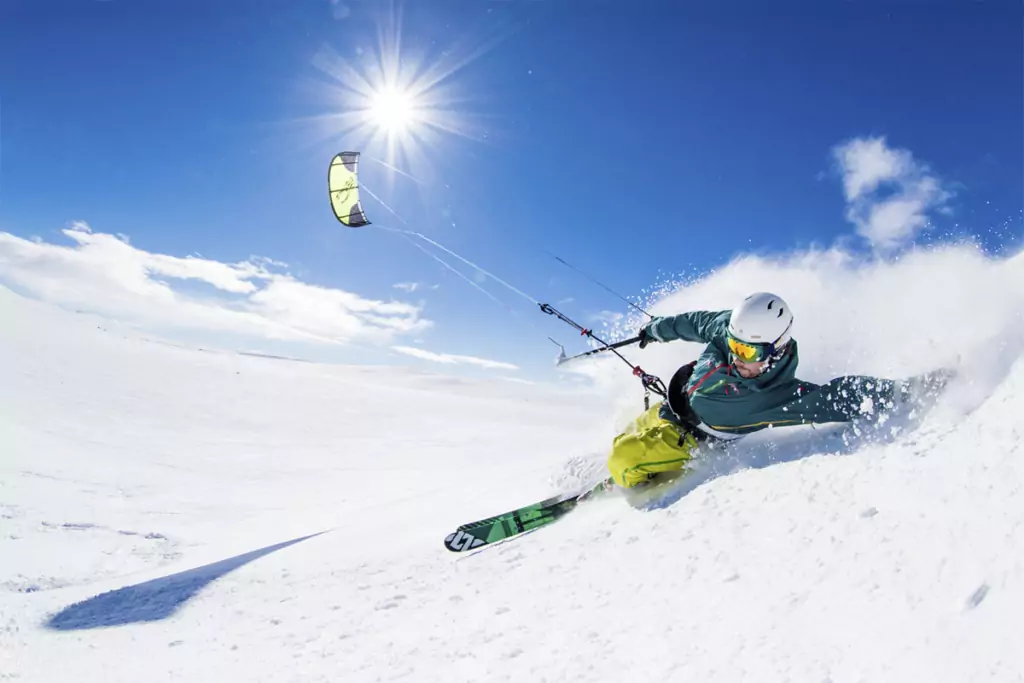
Kite skiing is another name for it similar to snow surfing, yet different so it is on this list. Its technique is very similar to windsurfing, yet it is harder to maintain balance since your arms have to take control over the kite. In this kind of activity, it is important to know that there are 2 types of equipment to choose from: foil kites and inflatable kites. See the tables below comparing the pros and cons for both:
| Foil Kites | |
| Pros | Cons |
| The size can be compact, usually is lightweight, which makes it easy to carry. | Sinks on the water and do not let to drift smoothly. |
| It can be relaunched off the water, let your jumps become floatier than ever, and get you in winds you previously thought are not kiteable. | Requires frequent high maintenance – bridles need tuning due to lightweight materials. |
| A perfect solution for low-end performance and more robust in general. | It can cause fears with limited self-rescue options when using and may require some training due to its structural fragile complexity. |
| Inflatable Kites | |
| Pros | Cons |
| Kites assembled for the waves can be drifty, which lets to turn off the power as you surf through the mountain or carve. | It can be heavy; you need to always carry a pump with you. |
| Fast turning, better in high wind and can handle turbulent rotor better. | Harder to pack down properly. |
| Safer high wind solo landing options coming with fewer bridles and less drag. | Damages very easily, devalues very fast, light wind performance. |
If you have already tried snow sports options (e.g., skiing and snowboarding) and traditional kiting, then snowkiting could be a great option for you to try yourself at!
It is even possible on the flats as the lift from the kite, which would propel you. The aerodynamic accessory that comes with it also makes it easier to get enough air to pull off jumps and tricks!
There are great destinations where this kind of sports can be well practiced:
- Jackson Hole, Wyoming
- Banff, Canada
- Europe: Norway, Switzerland, and Austria
4) Winter Swimming
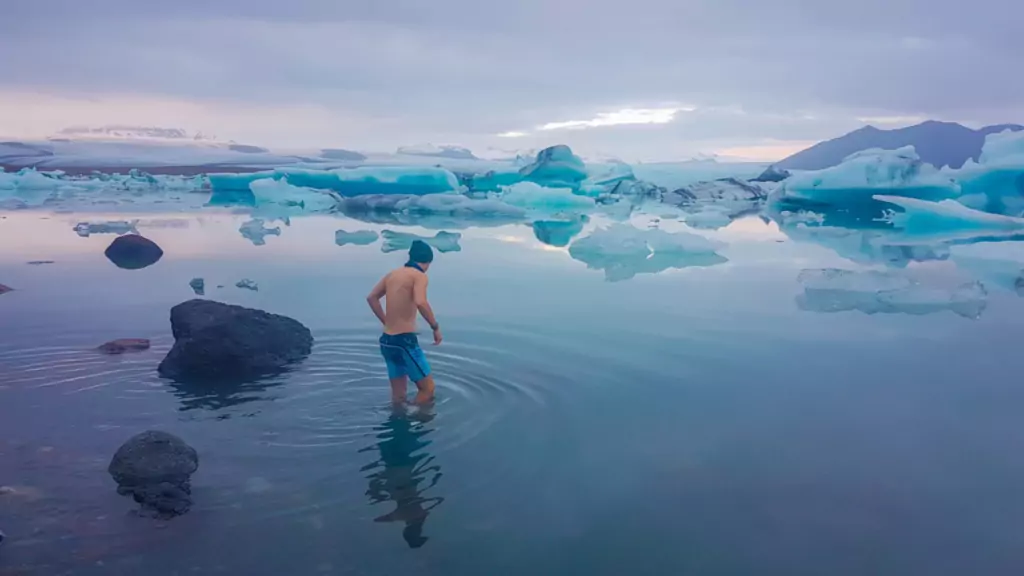
Yet another unusual way to get splashed through the cold season! Usually being done outdoors and known as “ice swimming” in colder destinations when the water is frozen.
This type of activity is famous in North America for its polar bear plunges commonly held throughout the U.S. and Canada for celebrating New Year’s Eve and raise money for charitable programs. It is also popular in Eastern European countries like Russia, where its inhabitants also do it as a part of religious ritual to celebrate Epiphany. If in doubt, consider the following health benefits and risks reported by fans before doing:
Health Benefits
- Tend to experience less fatigue and stress and more vigor.
- Better memory functionality.
- Feel more brisk, active, and energetic.
- Relieves pain if suffer from:
- Asthma
- Fibromyalgia
- Rheumatism
- Improves antioxidative protection.
- If practiced regularly, winter swimmers tend to less contract general diseases than the rest of the population.
Health Risks
- It can be dangerous for people not used to swimming in cold water.
- The gasp for air can cause water ingestion, which can lead to drowning.
- The change in blood circulation can cause cardiac arrest and fibrillation.
- Cold swimming should be avoided by people suffering from arrhythmia, obesity, high blood pressure, and/or respiratory diseases.
- Consuming alcohol should be avoided before swimming, as it may speed the onset and progression of hypothermia.
The best locations for practicing are known to be the following:
- Coney Island Beach, New York
- Murmansk, Russia
- Loch Lomond, Scotland
5) Ice Fishing
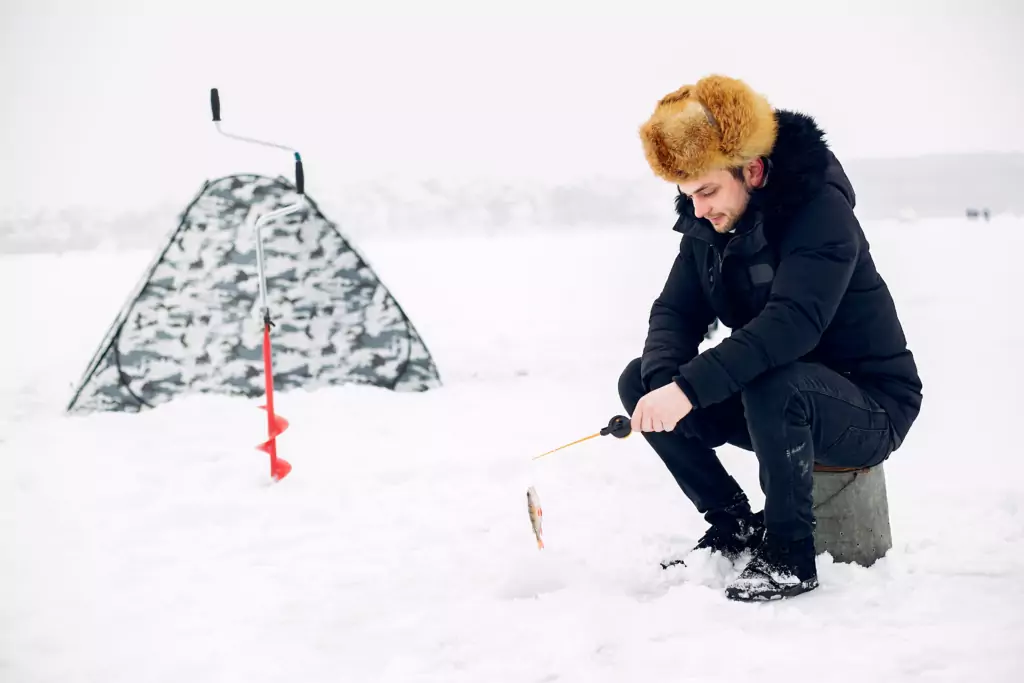
Lastly, but certainly not least, the activity to be considered for this winter season is winter fishing. This kind of water-based activity, unlike the previous ones, may require a lot of preparation equipment-wise. Here is the list of just a few to consider if planning to ake the most out of cold fishing:
- Ice saw, auger, or chisel to cut a rectangular or circular hole in the ice.
- Skimmer, or large metal spoon to remove new ice as it forms.
- The heater not only keeps yourself warm but also a fishing hole from freezing.
- Paper map (as your smartphone’s battery may die due to the freezing temperature) for pinpointing the locations of fish.
- Portable shelters for the ease of mobility’s sake if you spend more than a day looking for the best time to catch a fish.
- Flasher (similar to its summer cousin the fishfinder) provides depth information on fish’s or other object’s presence in the area selected for the activity.
- Club – an old school approach for temporarily paralyzing fish so that you could cut the hole and catch it.
Once you are all set with the aforementioned pieces of gear to carry with you for your next adventure, devote some time to think about the method of fishing among 3 most popular ones you would like to follow, as they also come with different equipment:
Light Fishing
This method involves permanent sitting at the hole throughout the selected period of time and lifts the pole from time to time by producing the jig effect. For this method to work, the following items are required:
- Light fishing rod
- Brightly colored lures
- Jigs with bait (e.g., fat heads, wax worms, crappie, or shiner minnows)
The 2nd and 3rd item on the list can be altered throughout the fishing event among each other to see which one works better.
Fishing with tip-ups
It is less intensive fishing and may require some time for preparation and extra items for involvement in the process:
- Tip-ups made of plastic or wood have a spool of line attached and a thin piece of metal that goes between the spool and flag.
- Swivel placed and the end of the black line.
- Blackline to be placed on the spool.
- Fishing line with a hook attached to the swivel.
- Power bait (e.g., small minnows or grab worms) to be placed on the hook.
To find out how successful you are in this type of fishing, pay attention to the flag, which once lifted, notifies the angler about the fish on the hook. After that, pull the line in. As the fish starts to fight, get its head into the hole in the ice so that you could lift it onto the ice thereafter.
There are 3 theories, each of which claims to produce the best outcomes for this type of fishing:
- The bait needs to be placed 3’ 2’’ feet (1 meter) under the ice.
- The bait needs to be placed between 6 to 10 (2-3 meters) under the ice.
- Suspending bait by 1 foot (30 cm) above the bottom of the lake.
Try them all each time you go out to the new place and see which one catches the best fishes in the lake!
Spearfishing
The last but not least method for winter fishing includes the involvement of a spear. Beware that many states in the U.S allow taking rough fish only if you choose to follow this method! Apart from the spear, consider involving the following equipment as well:
- Spear with 4-5 points
- Auger for creating larger holes in the ice.
- Ice shanty also is known as a dark house for sitting in.
Once the fish appears, plunge the spear into the water, and, here, is where not second, but millisecond counts!
Here are just some places among many in North America alone where to travel for the most authentic winter fishing experience:
- Devils Lake, North Dakota
- Lake Champlain, Vermont
- Fort Peck Reservoir, Montana
- Lake Winnipeg, Manitoba, Canada
- Lake Simcoe, Ontario, Canada
Final Thoughts to Consider
So it all ends with thinking that watersports have a lot to choose from even during the colder periods of times; however, they should be well planned out and the arrangements should not be taken lightheartedly, so that not only will they be more fun, but also will be less stressful and life-threatening.
In general, you wanna do winter water-based activities with an experienced person, especially if you are new to it, as it is more common with certain groups of people.
